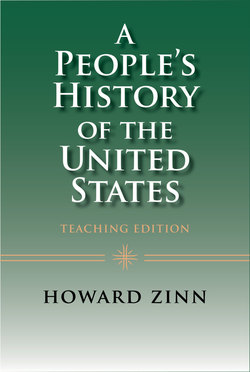Читать книгу A People's History of the United States: Teaching Edition - Howard Boone's Zinn - Страница 8
На сайте Литреса книга снята с продажи.
ОглавлениеIntroduction
Kathy Emery
In every year of my twenty years of teaching, I have been responsible for teaching an American history survey course. This meant having to deal with the issue of boring textbooks. When I chose to become a teacher, I promised myself that, if nothing else, I would not bore my students. So I needed to discover a way in which my students could enjoy learning. To accomplish this task, I began to expose my students to several points of view and then teach them the skills to pick and choose among the different views. I wanted them to develop opinions about history that they cared about. For me, this involved teaching a process of moral evaluation as well as rational analysis and explication of data. At first, I used Blum’s The National Experience for its detail.1 But it was still only one point of view and did not allow for the range of debate I was looking for. So I began assigning a different textbook to each student. This was an improvement over using only one interpretation of the past, since the standard textbooks of American history differ somewhat in their interpretations of events and selection of data.2
But after several years of experimentation with different textbooks, I still was not satisfied with the results. The range of difference was still too small to provoke the desired degree of controversy and thus interest in the material. I tried to expand the interpretive continuum with Grob and Billias’s Interpretations of American History?3 But I had to spend too much time in the classroom dissecting each article so the students could understand the arguments and data. I was never able to make it to the twentieth century by the end of the school year. Though I kept experimenting with a variety of secondary sources as supplements to the textbook, always looking for the perfect fit, it was only when I discovered Howard Zinn’s A Peoples History of the United States that I found the solution to the problem I had posed to myself so many years earlier.
Zinn provides what no other textbook does: the human impact, the human cost of decisions made by politicians and businessmen. With other texts, I had been asking my students to evaluate these decisions as a way to develop critical thinking. But such an exercise was only partially successful—students could not challenge generalizations made in standard texts without a significant range of data at their disposal, and they needed this full range if they were to think for themselves, to have opinions that they cared about. With the data that Zinn provides, however, the range of interpretations is wide enough for students to really have a choice in what they believe and, then, in what they know.
